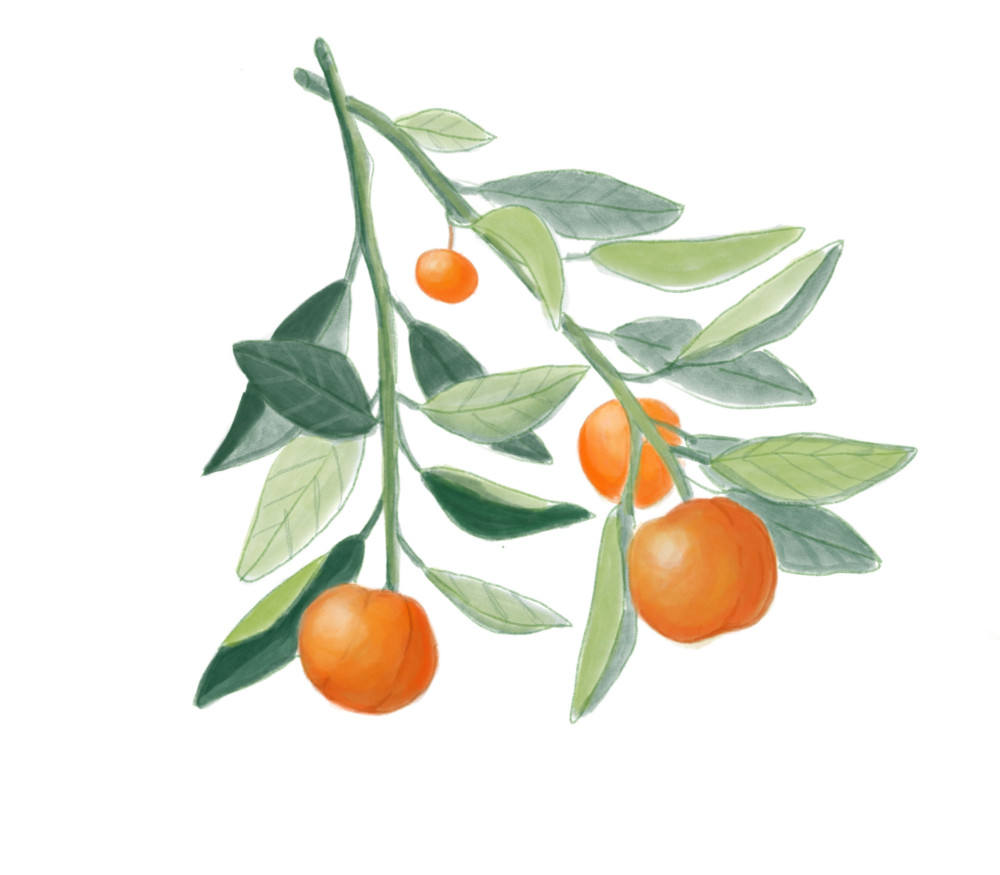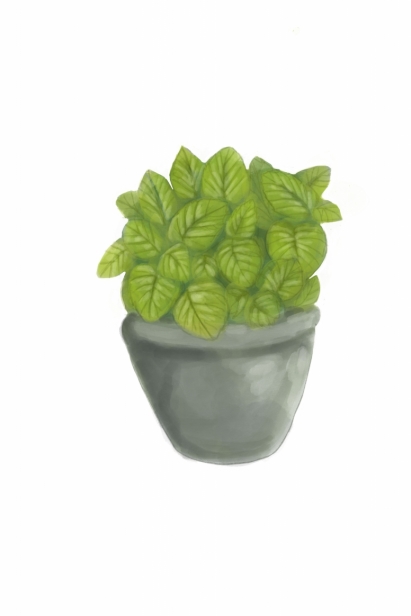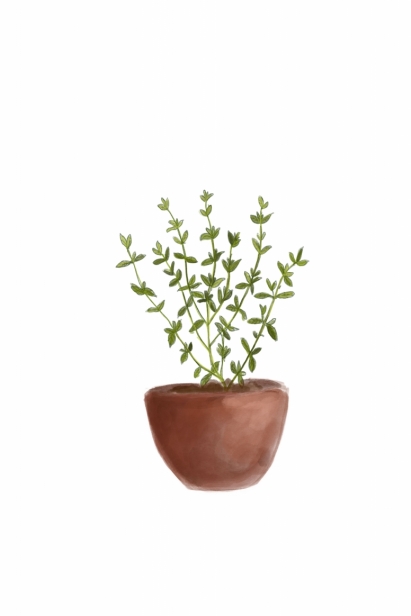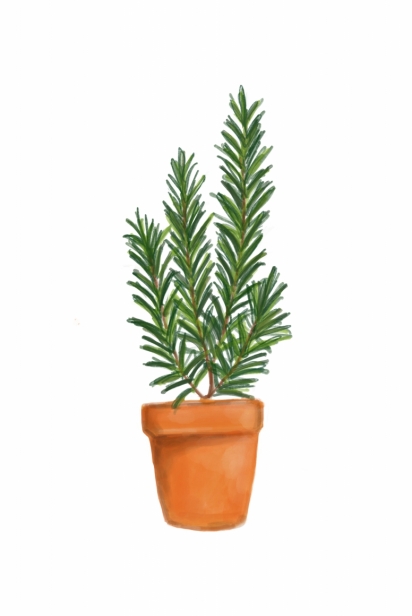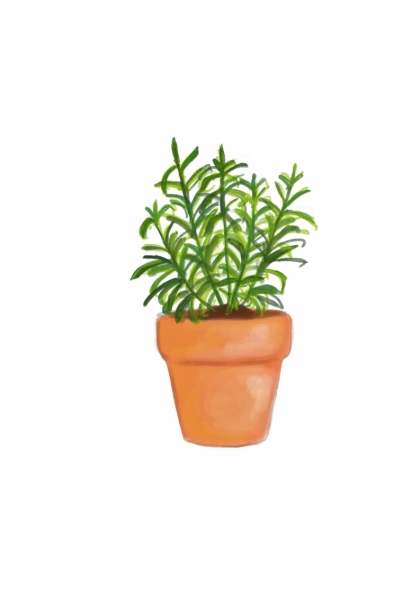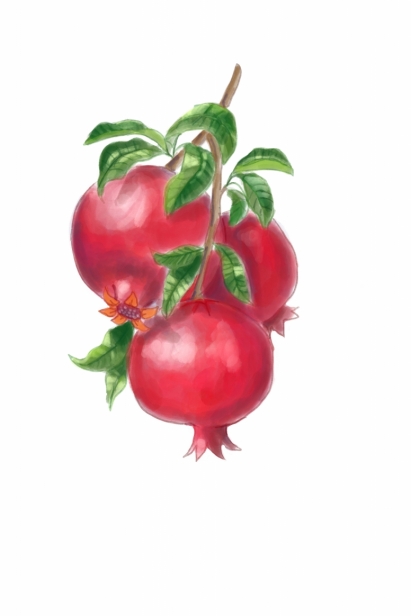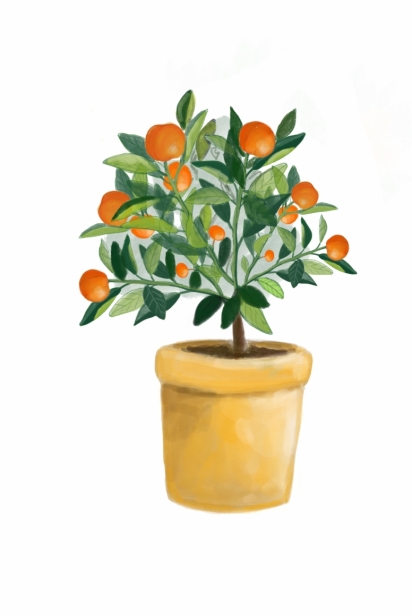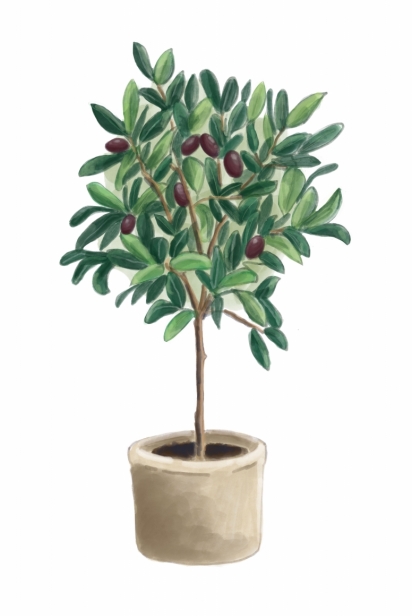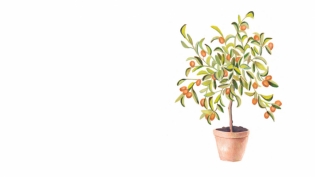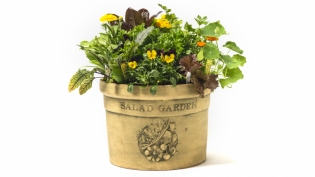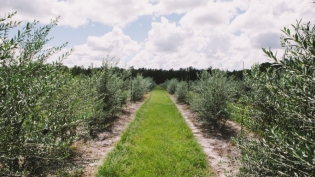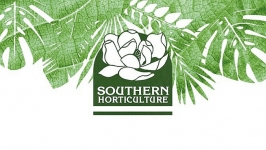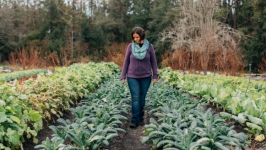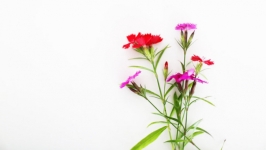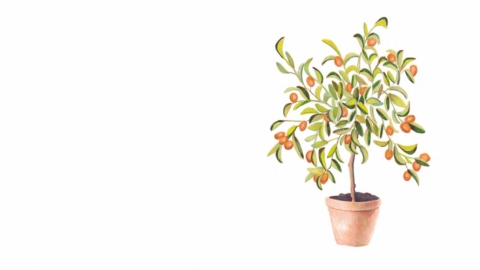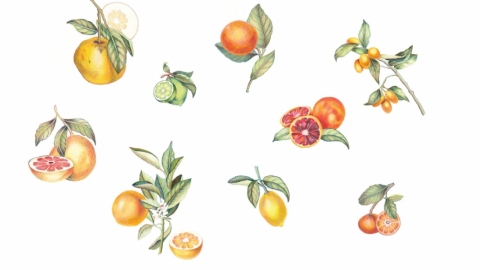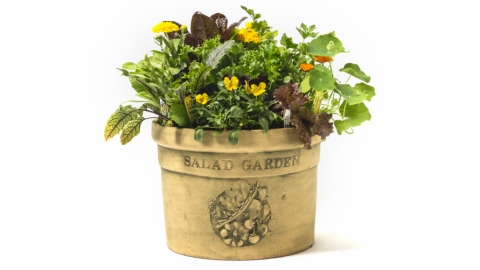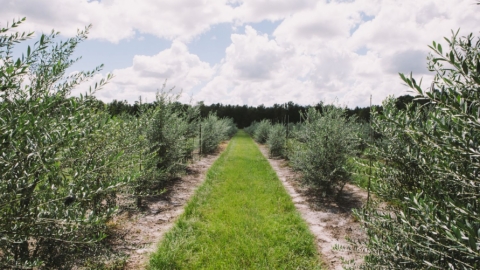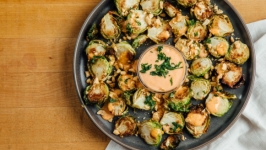Culinary Gifts that Keep on Giving
The holiday season brings a social calendar full of celebratory open houses and dinner parties. Looking for a way to show appreciation for all that hospitality? Forget that requisite bottle of wine or token fruit basket. How about a unique botanical gift guaranteed to delight the senses and tickle the fancy of even the most discerning host? Culinary plants easily lend themselves to container culture. As they are often rich in historical symbolism and lore, your beautifully repotted offering represents the perfect opportunity for hiding a special message inside.
Here are a few herbs and plants that do well in Northeast Florida.
**********
LEMON BALM (Melissa officinalis) is an easily-grown one-to-two-foot tall perennial (with winter dieback likely) prized by honeybees and beekeepers alike. (Melissa is derived from the Greek word for “bee.”) This herb from the Mint family has the rich odor and taste of fresh lemon due to the volatile oil contained therein. The flowers and leaves were historically used in teas, potpourri and perfumery as well as in antiseptic dressings. The 17th century garden writer John Evelyn offers that “Balm is sovereign for the brain, strengthening the memory and powerfully chasing away melancholy.”
GARDEN THYME (Thymus vulgaris, from the Greek thumus, signifying “courage”) is another popular honeybee plant that grows from four to eight inches tall. A symbol of energetic bravery and honor, the image of a thyme sprig with accompanying honeybee was often embroidered onto the scarves of knights by the ladies who loved them, according to the second volume of A Modern Herbal by Mrs. M. Grieve, originally published in 1931. Garden thyme is extremely aromatic and common in Italian cuisine. Its essential oil thymol was traditionally used as an antiseptic, local anesthetic and deodorant. There are many flavors and varieties of thyme to be found, including lemon, orange and caraway. They all prefer full sun to partial shade and demand a fairly arid soil.
ROSEMARY (Rosmarinus officinalis), the quintessential aromatic emblem of remembrance and fidelity between lovers, is a shrubbery perennial in forms both upright and prostrate, faring best in full sun and drier soils. One of the more popular culinary herbs, rosemary is a perfect partner to roast chicken and pork and as an ingredient in herbal breads and spreads. Rosemary topiaries and wreaths are popular gifts around the holidays; indeed Mrs. M. Grieve’s (A Modern Herbal) references the Renaissance custom of pairing rosemary with clove-stuck oranges to be presented as New Year’s gifts.
TARRAGON (Artemisia dranunculus) boasts three common types: French, Russian and Mexican (this latter, Tagetes lucida, is actually a different genus in the sunflower family). All have the typical anise flavoring and can be used interchangeably as meat seasonings as well as in salads and vinegars. The French, or true, tarragon is easier to cultivate than the Russian, but it is the Florida-friendly Mexican form that will perform best here, growing to three feet and covering itself occasionally throughout the season with small aromatic yellow flowers. The species name (dranunculus) identifies tarragon as a Dragon herb, those historically suited to the treatment of injuries sustained from mad dogs and/or venomous beasts.
POMEGRANATE (Punica granatum) has fruit in shades of seasonal reds against dark green foliage. This ancient plant has long been considered an historical symbol of nature’s rebirth and awakening. It appears in early architecture and tapestry work; many opinions also hold that the pomegranate was likely the original Tree of Life in Biblical Eden. A self-pollinating small tree, pomegranate is well suited to be grown in pots and is easily kept at a height between six to ten feet, happily taking in as much sun as possible. The beautifully red fruit and seeds therein, historically medicinal in use, are popular in desserts, salads and juices.
CALAMONDIN (Citrus spp.) is an attractive and popular citrus native to the Philippines. Most likely the result of a cross between the mandarin (tangerine-type) orange and kumquat, the calamondin’s small leaves, diminutive round orange fruit and cold-resistance combined with the fact that it both flowers and sets fruit off and on throughout the year make it an excellent potted patio tree choice. The notion that the calamondin happens also to be a Chinese symbol for luck, prosperity and long life in the New Year provides added significance to this appropriately seasonal gift.
ARBEQUINA OLIVE TREE (Olea europea ‘Arbequina’) is perhaps the oldest known cultivated tree in history and is an ever-popular fast-growing and self-pollinating tree. A universal symbol of peace dating back to ancient Greece, the olive’s oil also denotes purity and goodness and was widely used as sacred lamp fuel in classic temples. Salt-, pest- and drought-tolerant, once established the olive tree may provide up to twenty pounds of fruit each year. Though these evergreen trees may reach to twenty feet in the landscape, they are also easily contained in pots; it takes little effort to keep them pruned to shorter heights or trained into unique topiary or espaliered shapes. A baby Arbequina planted in an interesting clay bowl and wrapped in raffia ribbon would be a welcome Mediterranean-style feature for any holiday table.
This story made possible, in part, by the generous support of Irene Arriola at Saltwater Property Group in St. Augustine | www.irenearriola.com



